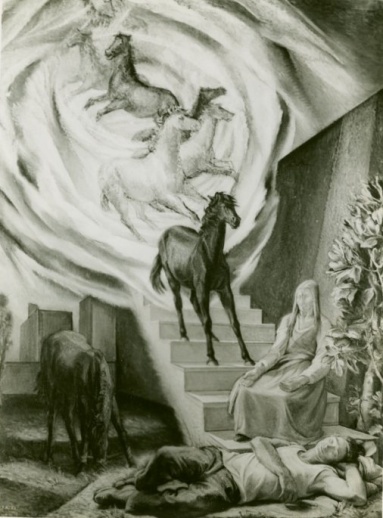To Nora Mapp

Astrology as catnip, catering to the little pleasure of being involved with the self. Because one of my brothers finds this penchant distasteful, I challenged myself to pique his interest with an extremely esoteric astrological guide based on the theology of Shi’a imaams.
The Sun Signs as Shi’a Saints
Fire:
Aries. al-Mujtaba (2nd imam, “the chosen”)
Leo. al-Taqi (9th imam, “the God-fearing, the generous”)
Sagittarius. al-Askar (11th imam, “the citizen of a garrison town”)
Earth:
Taurus. Ali ibn Abu Talib (1st imam, “commander of the faithful”)
Virgo. al-Kadhim (7th imam, “the calm one”)
Capricorn. Husain ibn Ali (3rd imam; “master of the martyrs”)
Air:
Gemini. Baqir al-Ulum (5th imam, “the revealer of knowledge”)
Libra. al-Mahdi (12th imam; “the guided one, the proof”)
Aquarius. al-Sajjad (4th imam; “the one who constantly prostrates, ornament of the worshippers”)
Water:
Cancer. ar-Reza (8th imam, “the pleasing one”)
Scorpio. as-Sadiq (6th imam, “the honest”)
Pisces. al-Hadi (10th imam, “the guide, the pure one”)
~
There have been changes—so many changes—the exaggerated quantity anchored by their necessity. But fundamentally I dwell on no feeling too long. Simmer at length and you hazard what Rilke described as “a photographic place that is being exposed too long, in that I continue to lie open to everything here, to this burning influence.” For months I flitted like a cornered bird, escaping flame formations before they engulfed my room and clothing, my skin and hair.
Water as a protective balm for a pained spirit. Swimming to dismember and dilute. On the Rain app on my phone I listen to Ocean Waves, increasing each day from five minutes to 10, then 10 to 15, then 20+.
~
Once in the English department of my college I saw a journal called Bad Subjects. (I remember one article on how Britney Spears’ consumable sexuality, at the time virginal and coquettish, was an extension of Victorian values.) DIY-ish, maybe even a bit embarrassed. But its tone and affect were ahead of the times, taking the form of what would eventually become the informal high-register timbre of the internet, where the serious-minded is preceded or undercut by the messy and indeterminate.
Refugees. Astrology. Plane crashes. Hip hop. Nuclear armament. Working out. Police shootings. Makeup. Water crises. Clothing trends. Stock prices.
~
The baddest of bad subjects are dreams. Other people’s are purportedly the nadir of boredom, containing a drama whose setting, character development, phantasmagoric doors, and arbitrary symbols are barely known even to them, much less the listener, so there is no common ground on which to build a sellable, or at least intriguing, story. Who cares.
But like much of the built environment dreams are culturally relative. I grew up in a family that saw the dream world as an oracle. Dead relatives often returned to commune with the surviving, and send confirmation of their wellness and intactness. If a long-dead aunt visited her mother’s dream it was to assuage doubts about her soul’s well-being. This dream would get remitted through international phone calls, tucked in among other facts. The economy is still shit. They’re arresting people for lipstick again. Your grandmother had a dream, N. is doing OK.
I was long attuned to dreams but only as a way to keep score, a list for roving images and plot lines jotted down by a sleepy hand. But meeting a psychoanalyst who formalized that off-and-on half sketch recoded the practice, awakening me to take account for all that is possible, even if improbable, to recover. And he would constantly correct me when I slipped and alluded to “real life” instead of distinguishing between the “waking world” and the “dream world.” He was uncharacteristically stern about this.
From him I learned about dream archetypes—the recurrence of my mother, for one—typified by people we knew in the waking world but who acted as stand-ins for our fragmented selves. (This was somewhat disappointing since some part of me wanted to believe the mother-figure who looked and behaved as mine in the dreams was my actual mother, not the dream-world equivalent of a meme, populating every window and feed in simulacral form.)
Repeatedly dreamed of rabbits in the months leading up to entering art school, and again each time I leaped into new artwork. It’s easy to gloss some of them now but at the time I was stupefied why night after night brown bunnies populated the landscape, whether a highway motel or a Japanese island.
In looking back at last year’s dream recordings I found the subject of many the brute force done to Palestinians. Isolated men are soaked in poisonous fumes from metal canisters. Groups of pedestrians are pummeled with the butts of rifles. People are crying, there is reddish smoke. At the time, I was only occasional witness to such direct forms of attack, and in daily life much more attuned to the unseen ways that violence lodges itself painfully inside the cracks for the long haul. But the dreams enlarged the scenes of violence as avatars for the invisible crevices into which all daggers and humiliations dragged. It manifested a nightly ritualized landscape of helmeted soldiers, grimacing bulldozers, and burning checkpoints—all witnessed directly but not necessarily all at once—in the disgusting green of night-vision goggles. The dreams demanded a visual repertoire of violence even as the one generated in waking life was more nuanced in the destruction it levied.
~
Once I tweeted that dreams are the astrology of the knowledge world—an embarrassment to neurology, a non-issue for physiology, a hardened cliché in literature. An overlooked or shameful or abandoned part of the self that we have left to A-Z Dream Dictionary, music video flashback sequences, and Sigmund “royal road to the unconscious” Freud. Their sense of being a beacon for an authentic self is falsified. Their potential for heightening the “truth” about psychic expression is hyperbolized. And the how and what for and for whom of their evolutionary rationale is left unexamined.
My friend B., who studied neuroscience for seven years, said scientists in his lab found his interest in the study of dreams laughable, sleep itself still an unprestigious field of inquiry. Who still cares.
But I suspect the real reason post-Surrealist dreaming is under suspicion, ridicule, or indifference is its curious ability to produce non-productively.
In other words:
“On the right, so to speak, the concept of production can scarcely be separated out from the ideology of productivism, from a crude and brutal economism whose aim is to annex it for its own purposes. On the other hand, it must be said, in response to the left-wing or ‘leftist’ notion that words, dreams, texts and concepts labour and produce on their own account, that this leaves us with a curious image of labour without labourers, products without a production process or production without products, and works without creators (no ‘subject’ – and no ‘object’ either!).”
